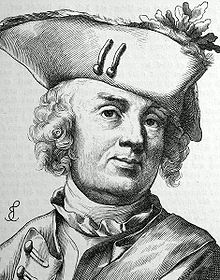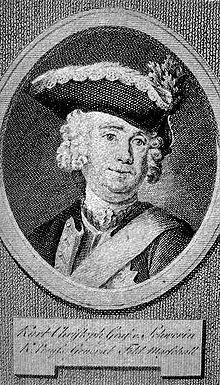
The Silesian Wars were three wars fought in the mid-18th century between Prussia and Habsburg Austria for control of the Central European region of Silesia. The First (1740–1742) and Second (1744–1745) Silesian Wars formed parts of the wider War of the Austrian Succession, in which Prussia was a member of a coalition seeking territorial gain at Austria's expense. The Third Silesian War (1756–1763) was a theatre of the global Seven Years' War, in which Austria in turn led a coalition of powers aiming to seize Prussian territory.
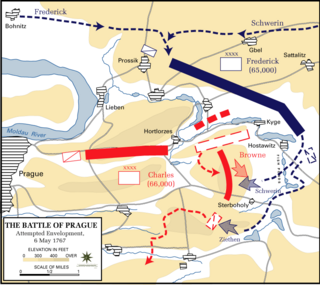
In the Battle of Prague or Battle of Štěrboholy, fought on 6 May 1757 during the Third Silesian War, Frederick the Great's 64,000 Prussians forced 60,000 Austrians to retreat, but having lost 14,300 men, decided he was not strong enough to attack Prague. The battle is mentioned in the famous German ballad Lenore written in 1773 by Gottfried August Bürger.

The Battle of Kolín (Kolin) on 18 June 1757 saw 54,000 Austrians under Count von Daun defeat 34,000 Prussians under Frederick the Great during the Third Silesian War. Prussian attempts to turn the Austrian right flank turned into piecemeal frontal attacks and were defeated in five and a half hours of combat. The Prussians lost 13,733 men, the Austrians 8,100. Frederick gave up the siege of Prague as well as his planned march on Vienna and retreated to Saxony.

The Battle of Mollwitz was fought by Prussia and Austria on 10 April 1741, during the First Silesian War. It was the first battle of the new Prussian King Frederick II, in which both sides made numerous military blunders and King Frederick II of Prussia fled the battlefield, but the Prussian Army still managed to attain victory. This battle cemented Frederick's authority over the newly conquered territory of Silesia and gave him valuable military experience.

The Battle of Chotusitz, or Chotusice, sometimes called the Battle of Čáslav, took place on 17 May 1742, in Bohemia, now the Czech Republic; it was part of the 1740 to 1742 First Silesian War, itself a subsidiary of the wider War of the Austrian Succession.

Friedrich Heinrich Reichsgraf von Seckendorff was a Franconian field marshal and diplomat, in the service of the imperial Habsburg monarchy of Austria. Later he served as commander of the Bavarian army and fought Austria.

Hans Joachim von Zieten, sometimes spelled Johann Joachim von Ziethen,, also known as Zieten aus dem Busch, was a cavalry general in the Prussian Army. He served in four wars and was instrumental in several victories during the reign of Frederick the Great, most particularly at Hohenfriedberg and Torgau. He is also well known for a raid into the Habsburg territories during the Second Silesian War, known as Zieten's Ride. After engaging in a reputed 74 duels, and fighting in four wars, he died in his bed at the age of 86.

The Second Silesian War was a war between Prussia and Austria that lasted from 1744 to 1745 and confirmed Prussia's control of the region of Silesia. The war was fought mainly in Silesia, Bohemia, and Upper Saxony and formed one theatre of the wider War of the Austrian Succession. It was the second of three Silesian Wars fought between Frederick the Great's Prussia and Maria Theresa's Austria in the mid-18th century, all three of which ended in Prussian control of Silesia.

Count Leopold Joseph von Daun, later Prince of Thiano, was an Austrian field marshal of the Imperial Army in the War of the Austrian Succession and Seven Years' War. Daun is considered one of the outstanding military leaders from his time.
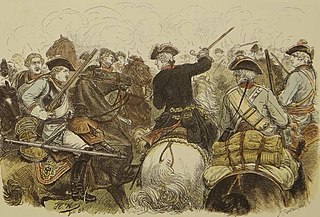
The First Silesian War was a war between Prussia and Austria that lasted from 1740 to 1742 and resulted in Prussia's seizing most of the region of Silesia from Austria. The war was fought mainly in Silesia, Moravia and Bohemia and formed one theatre of the wider War of the Austrian Succession. It was the first of three Silesian Wars fought between Frederick the Great's Prussia and Maria Theresa's Austria in the mid-18th century, all three of which ended in Prussian control of Silesia.
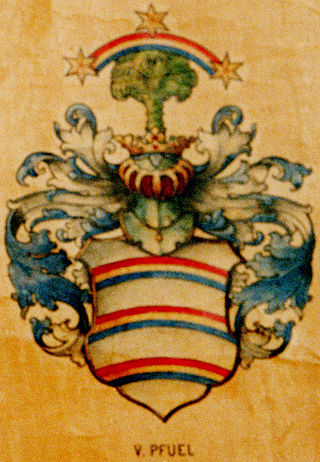
The Pfuel family is an ancient German noble family that arrived to Brandenburg in the year 926 and later widened their influence to Saxony, Saxony-Anhalt, Mecklenburg, Pomerania, Württemberg, Westphalia, Eastern Europe and Sweden.

The Third Silesian War was a war between Prussia and Austria that lasted from 1756 to 1763 and confirmed Prussia's control of the region of Silesia. The war was fought mainly in Silesia, Bohemia and Upper Saxony and formed one theatre of the Seven Years' War. It was the last of three Silesian Wars fought between Frederick the Great's Prussia and Maria Theresa's Austria in the mid-18th century, all three of which ended in Prussian control of Silesia.
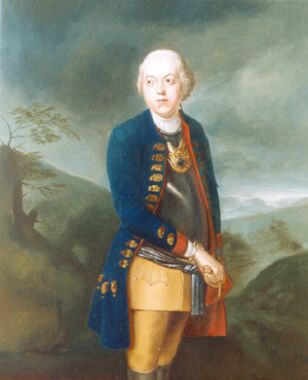
Hans Christoph Friedrich Graf von Hacke was a Prussian General and Commandant of Berlin. The Hackescher Markt in Berlin is named after him.

Christoph II, Burggraf and Count of Dohna-Schlodien was a Prussian general. He was the son of Christopher I, Burgrave and Count of Dohna-Schlodien (1665–1733). He served in the armies of Frederick William I of Prussia and his son, Frederick II, in the Silesian and Seven Years' wars. He was particularly successful at the Battle of Gross-Jägersdorf, and instrumental in relieving Siege of Kolberg.

Heinrich von Manteuffel, was a Prussian lieutenant general. He participated in the Pomeranian campaign of 1715 and the first two of Frederick's Silesian wars, was wounded at Chotusitz, and commanded an infantry regiment at the beginning of the Seven Years' War. He received the Order of the Black Eagle, the Order Pour le Merite and his name is inscribed on the Equestrian statue of Frederick the Great.
Ernst Christoph von Nassau, sometimes called Christoph Ernst, was a Prussian general lieutenant and knight of the Black Eagle Order. He is memorialized on the Equestrian statue of Frederick the Great. After fighting in the Prussian army during the War of Spanish Succession, he transferred to the Hessian army; subsequently, he served during peacetime in the army of the Duke of Saxony and in 1740, upon the ascension of Frederick in 1740, he rejoined the Prussian army and served in the War of Austrian Succession.
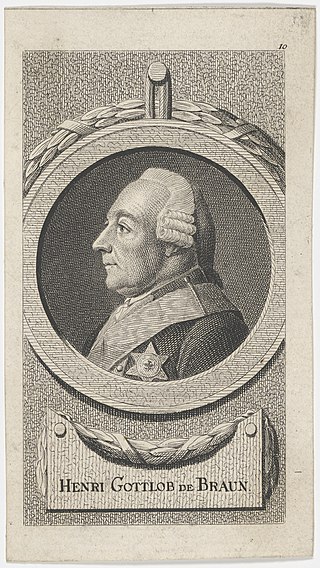
Heinrich Gottlob von Braun was a Prussian general of infantry. He served Frederick the Great during the War of Austrian Succession, and received the Order Pour le Mérite and the Black Eagle Order. In 1851, he was also memorialized on the Equestrian statue of Frederick the Great.

Johann Paul von Werner was chief of the Prussian Hussar Regiment No. 6 ; he also received the Prussian Order Pour le Mérite. Initially in Austrian service, he fought against Spain, France, the Ottoman Empire and against Prussia. One of Frederick the Great's trusted diplomats, Hans Karl von Winterfeldt, recruited him into Prussian service in 1750; subsequently, he fought for Prussia against the Austrians in the Seven Years' War and the War of Bavarian Succession. He was wounded once, and taken prisoner several times. The Prussian playwright Gotthold Lessing modeled the character of the sergeant in his Minna von Barnhelm on Werner.

Robert Scipio, Freiherr von Lentulus was a military officer, first in Austrian service, later in Prussian service. He was among Frederick the Great's trusted officers, and served him not only in military capacity but as a diplomat and, later, a governor of Neuchâtel. He was proprietor of a Prussian cavalry regiment in the years 1758–1778.
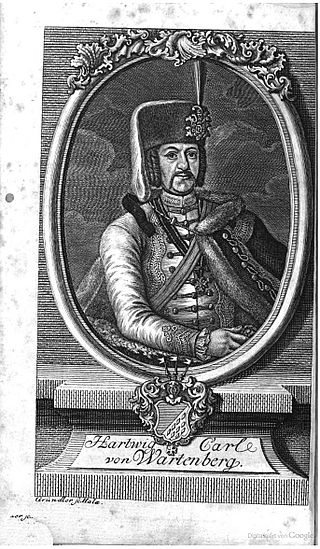
Hartwig Karl von Wartenberg was the Royal Prussian major general and Proprietor (Inhaber) of the Hussars Regiment No. 3.
